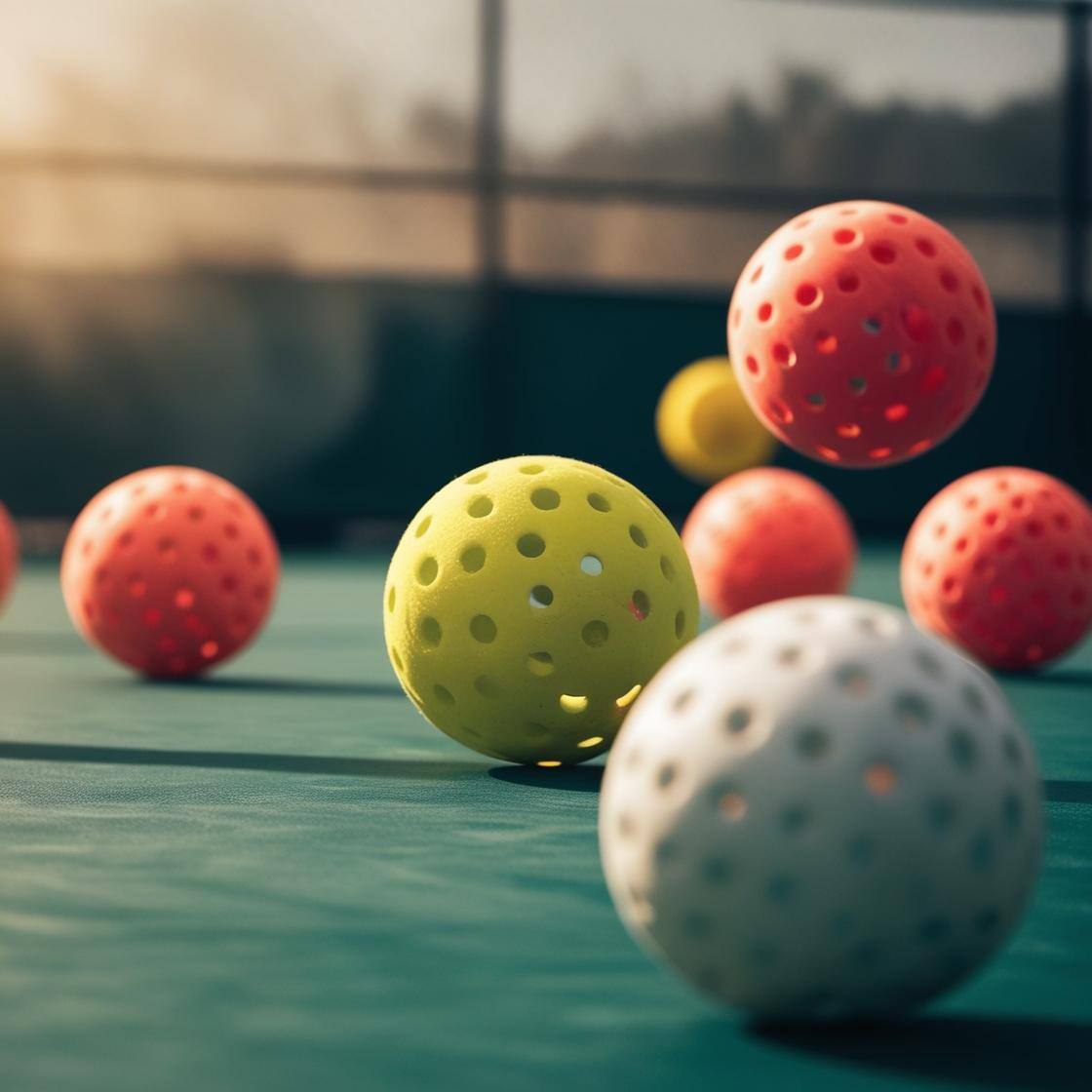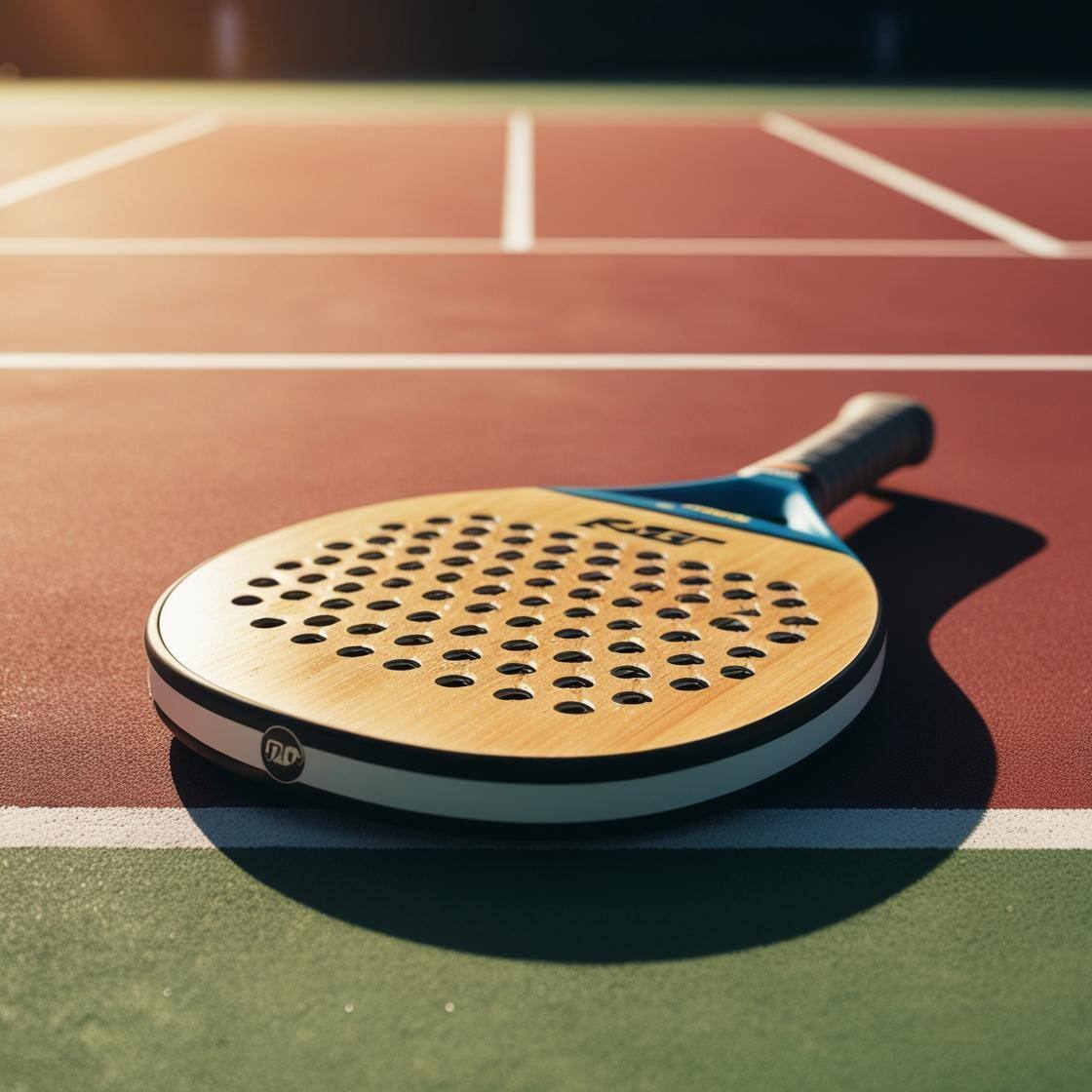6 min read
3D Printing and Nanotechnology
3D printing and nanotechnology are two fields of research and innovation that, at first glance, might appear worlds apart. The former focuses on...
6 min read
![]() Weerg staff
:
Feb 6, 2025
Weerg staff
:
Feb 6, 2025

The world of sport is constantly evolving, with each discipline continuously seeking tools and solutions to enhance performance, comfort, and safety. In this context, technological innovation plays a crucial role. Among the most influential technologies in recent years, 3D printing has proven to be a game-changer, unlocking unexpected possibilities. If we consider a relatively new and rapidly growing sport like pickleball, it is easy to imagine the potential of 3D printing in creating customised equipment, cutting-edge designs, and increasingly efficient accessories.
In this article, we will explore how pickleball, a hybrid of various racquet sports, is spreading rapidly worldwide and how 3D printing can be leveraged to revolutionise equipment and solutions related to this discipline. We will examine potential applications, technical advantages, and benefits for players of all levels. Finally, we will discuss how relying on a specialised 3D printing service, such as that offered by Weerg, can make a real difference to a successful project.
Before delving into the potential applications of 3D printing, it is essential to clarify what pickleball is. Originating in the United States in the mid-1960s, pickleball is a racquet sport that combines elements of tennis, badminton, and table tennis. It is played on a court similar in size to a badminton court but with a low net, akin to tennis. Players use paddles that are smaller than tennis racquets and a perforated plastic ball, resembling an American wiffle ball.
The game is characterised by:
A dynamic pace: Rallies can be very fast, yet the compact court size makes the game accessible even to those without advanced athletic skills.
Ease of learning: Simple rules and basic techniques allow people of all ages to play.
Social engagement: Often played in doubles, pickleball is a highly sociable sport that fosters interaction and community engagement.
In recent years, pickleball’s popularity has grown exponentially, with millions of players in the United States alone and rapid expansion across Europe. This swift growth has led manufacturers, retailers, and enthusiasts to seek solutions to enhance the playing experience and improve equipment quality.
3D printing, or additive manufacturing, is a technology that enables the production of three-dimensional objects by progressively adding layers of material from a digital model. This method allows for the creation of complex shapes, customisation of each individual piece, and the use of various materials, from classic PLA to technical polymers such as Nylon PA12, TPU, or composite materials with specific mechanical and chemical properties.
In the sporting sector, 3D printing offers numerous opportunities:
Customisation: High-level athletes (and amateurs alike) require tailor-made equipment that perfectly suits their playing style or physical characteristics. 3D printing enables the rapid and cost-effective production of custom grips, insoles, protective gear, and other accessories compared to traditional manufacturing methods.
Rapid prototyping: Experimenting with new designs, shapes, or materials is crucial. Additive manufacturing allows for testing multiple solutions without the high costs associated with industrial moulding.
Enhanced performance: Complex geometries help reduce weight and optimise mass distribution, increasing flexibility or rigidity as needed.
Cost and time efficiency: Additive processes require fewer production steps and simplify supply chains, leading to significant time and resource savings.

Although pickleball is a simple game, optimised equipment can significantly improve precision, comfort, and performance. Here are some ways in which 3D printing can make a difference.
La racchetta utilizzata nel pickleball è più piccola di una racchetta da tennis e viene generalmente realizzata in materiali compositi come la fibra di vetro, la fibra di carbonio o l’alluminio, con un nucleo in polimero. Sfruttando la stampa 3D, è possibile:
Experiment with innovative shapes: Geometries that increase the sweet spot or designs that improve aerodynamics and reduce air resistance.
Customise weight and balance: Internal lattice structures can distribute weight strategically, enhancing control or increasing power.
Adjust rigidity: By modifying core thickness or density, players can influence energy return and playing feel.
Enhance grip and surface texture: Directly printed textures can improve handle grip and contact surfaces, eliminating the need for post-production tapes or adhesives.
Pickleball balls are perforated, lightweight plastic spheres designed to bounce less than tennis balls. With 3D printing, it is possible to:
Optimise hole positioning and size: To achieve a more stable flight and tailor bounce characteristics to specific needs (e.g., for beginners or professionals).
Vary density: Using different materials or internal structures, balls can be designed with different play speeds, extending rally duration.
Test new polymers: Some additive materials offer greater durability or unique impact behaviour while maintaining a lightweight structure.
Like any sport, pickleball includes various accessories that enhance player experience and safety. Examples include:
Ergonomic grips: Custom-printed to fit a player’s hand perfectly.
Personalised protective gear: Knee pads, wristbands, or wrist guards printed in flexible TPU for comfort and optimal fit.
Components for nets and court equipment: Clips, hooks, supports, and boundary markers can be 3D printed for durability and weather resistance.

3D printing solutions are not limited to professionals or large companies—amateur players can also benefit from them:
Greater adaptability: A custom paddle can correct posture or grip issues, reducing injury risks and improving shot accuracy.
Quick replacement of worn parts: Damaged accessories or components can be reprinted without lengthy supply delays.
Opportunities for experimentation: Enthusiasts can test various designs, weights, or materials to find the perfect combination without exorbitant costs.
Waste reduction: 3D printing uses only the necessary material, minimising waste and environmental impact.
Although pickleball is still an emerging market in Europe, some companies in the US have already started experimenting with 3D printing solutions. For example:
These first experiments show how the versatility of 3D printing can be exploited to create solutions with a high degree of innovation, which is difficult to achieve with traditional methods.
When it comes to implementing 3D printing in a project, be it sports-oriented or of any other nature, it is important to consider that the production phase requires various prerequisites.
CAD design knowledge: To create 3D models suitable for printing.
Material and printing technology selection: Each polymer has unique properties (elasticity, impact resistance, weight, surface finish), and each technology (FDM, MJF, MSLA) has advantages and limitations.
Testing and verification: Functional trials are essential to ensure the printed part meets the desired requirements.
By relying on Weerg, you can count on a professional service, with a team of experts able to provide support at every stage of the process. Weerg, in fact, offers:
A wide range of materials: From classic polymers to advanced technical materials, including high-performance composites. This enables the selection of the most suitable solution based on specific requirements for durability, lightweight properties, thermal resistance, and aesthetic impact.
State-of-the-art technology: Industrial-grade machinery capable of ensuring dimensional accuracy and superior surface quality, even for larger production batches or complex projects.
Design support: A dedicated team that can assist in the design and optimisation phase, suggesting modifications to improve printability or functionality.
Weerg’s online platform allows users to upload their files and receive instant quotations, streamlining the process and enabling customers to manage their orders autonomously.

Let’s imagine a pickleball enthusiast looking to design a custom paddle. The process could follow these steps:
File Submission to the Service: Uploading the model to Weerg’s website, obtaining a quote, and confirming the order.
Production: Using the selected technology (e.g., MJF for the paddle and FDM or Multi Jet Fusion for the grip), Weerg manufactures the parts precisely according to the 3D model.
Post-Processing and Finishing: After printing, surface treatments such as sandblasting, dyeing, or other refinements enhance aesthetics and functionality.
Field Testing: The paddle is tested during a pickleball match, assessing comfort, handling, rigidity, and identifying potential areas for improvement.
This approach, significantly faster and more cost-effective than traditional methods, allows for a swift transition from concept to prototype, enabling iterative design improvements until the product meets the desired standards.
The growing popularity of pickleball will drive more and more athletes and businesses to seek cutting-edge solutions to enhance the playing experience. At the same time, 3D printing is constantly evolving: new composite materials, hybrid printing processes that combine metal and polymers, and the integration of artificial intelligence in the design phase are set to further revolutionise the industry.
Among the particularly intriguing trends we may see in the coming years are multi-material paddles, featuring different zones made from distinct materials to provide rigidity and flexibility precisely where needed; integrated sensors—3D-printed components housing micro-sensors to collect data such as impact speed, ball angle, and grip strength, offering valuable insights for game analysis and performance enhancement; and ultra-lightweight solutions, made possible by computer-designed complex internal structures, allowing for paddles with an excellent weight-to-rigidity ratio while reducing player muscle fatigue.

6 min read
3D printing and nanotechnology are two fields of research and innovation that, at first glance, might appear worlds apart. The former focuses on...

6 min read
Padel has seen exponential growth in Italy and worldwide in recent years. A glance at sports clubs in major cities and smaller towns alike reveals an...

6 min read
The game of chess boasts a history spanning millennia, seamlessly merging art, strategy, and culture into a singular experience that has captivated...